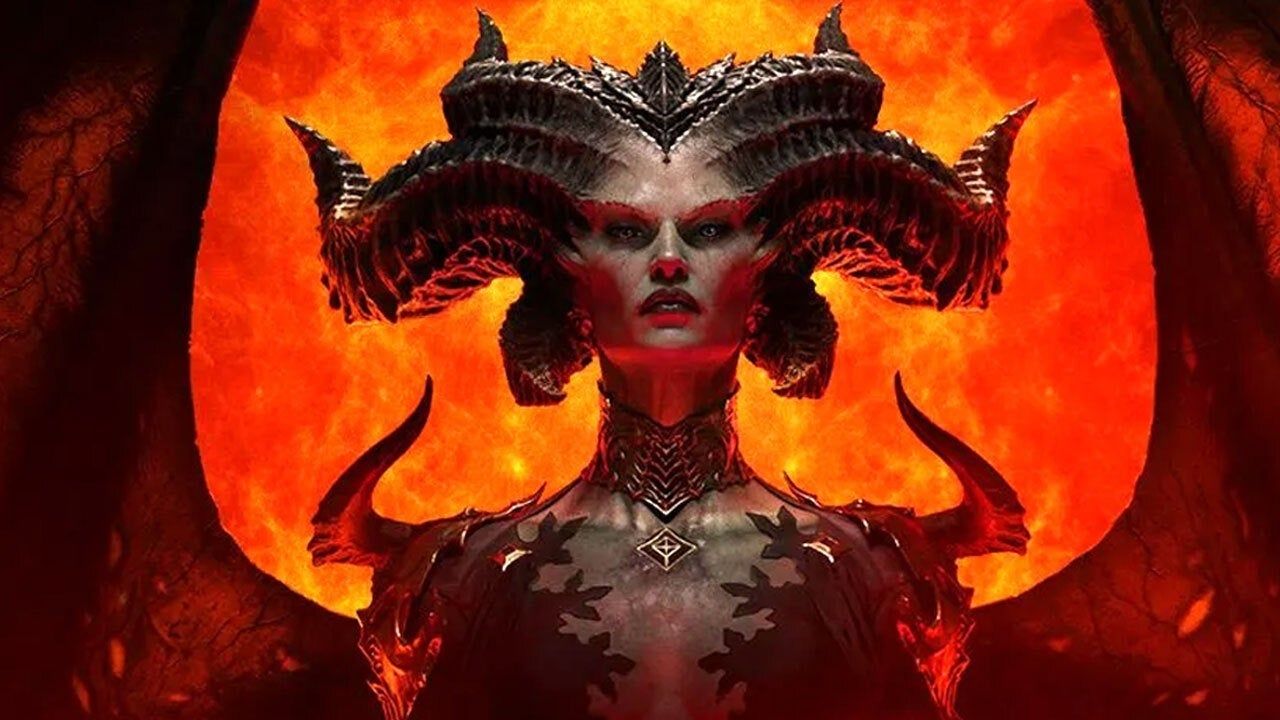How Diablo 4’s Story Breaks Free From Its Past - IGN
The Diablo series has made a return through the release of Diablo 4. An entirely new entry in the series, it takes place some 50 years after the end of Diablo 3, and introduces a new cast of characters, and a new antagonist. Story and Narrative Producer Melissa Corning, Senior Quest Designer Grzegorz Sadzinski, Associate Game Producer Kelly Yeo, and Art Director John Mueller took the opportunity to sit down with IGN and share information about the narrative, art direction, and how the team conceptualized this entry’s antagonist—Lilith.
Art Director John Mueller shared what the key visual inspirations were for Diablo 4’s overall art direction, and that it traces back to a trip to the Louvre when he was young. Theodore Jericho’s The Raft of the Medusa was the painting in question, stating that it helped create Diablo 4’s more classical approach in how it portrays Lilith in Inarius, while Yeo shared that these inspirations served as a broader message of humanity’s struggle against odds they can’t control, a proverbial eternal conflict brought to life in the Diablo universe.
JEAN LOUIS THÉODORE GÉRICAULT - La Balsa de la Medusa (Museo del Louvre, 1818-19). Wikimedia Commons
The visceral nature of Caravaggio was also mentioned as key inspiration for how they chose to approach contrast within the visual elements of the game itself, and how Albert Bierstadt’s work helped inform the environments of the game. When asked if the art direction of the game was done as a deliberate choice in response to criticism of Diablo 3, Mueller elaborated and stated that each Diablo game has its own core visual identity, entangled with the different stories found within Sanctuary, and Diablo 4’s art direction reflective of the narrative this team wanted to tell. “I think that each of the games, I would say it’s a lens in which you view the world of Sanctuary. All of Diablo one through three all view Diablo differently, and treat Diablo differently. And that’s the beauty of making a numbered sequel, in that you get to recast the die. But very early on we had this commitment to fulfilling the promise of Diablo 4 being a dark, gothic fantasy.”
While Diablo 4 is most certainly its own narrative, it doesn’t hesitate in calling back to previous games for character archetypes or even bosses. Lorath Narr, who first appeared in Reaper of Souls, and Neyrelle are two major characters that end up harkening back to Deckard Cain, and Leah who appeared in Diablo 3 only to become an unfortunate sacrifice to bring back the Prime Evil. Much of Diablo 4’s narrative in general seemed to pull from past ideas, perhaps to use as hallmarks of the growing franchise.
Loading Play
But when it came to the discussion of Neyrelle, a new character brought into the fold, and her potentially being seen as an attempt to correct the narrative pitfalls concerning Leah in Diablo 3, particularly how her character becomes a plot device to bring back Diablo as a boss fight, Senior Quest Designer Grzegorz Sadzinski said, “We want to make sure that each character has their own motivations, aspirations, and the character journey they go through without relying on repeating something.”
The narrative team wanted to make sure that these characters could stand on their own without new players needing to have experienced the previous games to enjoy them. Story and Narrative Producer Melissa Corning elaborated that while additional knowledge will enhance a player’s overall experience with characters like Lorath—and his obvious connection to Deckard Cain and previous major story beats in the Diablo universe—that won’t impede on how the narrative choose to explore just who this character is and how he became the isolated old hermit players know today.
“Our approach to creating this story was iterative. We wanted to make sure that we create something that we are proud of and put this in front of the team, gathering feedback just like with any other feature that we have in the game.” Sadzinski in terms of the overall creation of Diablo IV’s narrative. Corning also went on to say that the development team “read through every single one of those reports and took it into consideration.” But this didn’t just extend to the main scenario of Diablo IV. She continued, stating that feedback was even taken into consideration for lines of dialogue from non-story important characters, like errant villagers found throughout Sanctuary through the open beta period.
“ [Lilith] is nuanced and is not, you know, a giant demon out of hell that is just doing terrible things and we have to kill it.
But being the most prominent character in Diablo 4, Lilith circled back into the topic of conversation. Sadinski elaborated on the creation of Lilith, and just how collaborative it was among different parts of the development team. “I think it's a matter of so many other disciplines coming together under strong creative direction. And making sure that that character [Lilith] is nuanced and is not, you know, a giant demon out of hell that is just doing terrible things and we have to kill it. That was one of the goals.” He shared that the narrative team, casting directors, voice directors, and the cinematic team all had a hand in creating the character Lilith would eventually become, post her very slight inclusion in Diablo 3.
Art Director John Mueller expanded upon Lilith’s design as she appears at the end of the game as the player’s final story encounter. Much like her father, Mephisto, Lilith becomes a hovering torso, mostly resembling herself if not for the long, skeletal appendages and tail during the final stage of the fight. “It’s almost like she’s become her father. You know, like what is it that she hates most about herself or what she hates the most?” He explained, referencing Lilith’s second form during a boss fight.
“I remember we actually did a lot of iterations to get the balance right, that this wasn’t just Mephisto And really bringing that forward and kind of having the second form where, you know, it’s her monster form, but keeping her character. She doesn’t just fall apart and become this gross monster, you know? Like, it still had to be Lilith. So I think that was the biggest challenge there.” But Mueller explained that while this version of Lilith so deeply resembles her father after giving into her hate, he brought up one of Lilith’s more interesting features, that being her eyes.
Loading Play
“The reason for that blue eye is interesting. It represents the good in her, and it was an important detail early on. Because in her first design she had red eyes, but we wanted to get that feeling that she was an outcast among demons, like she was banished by demons into the abyss. So we wanted to give her this feeling of the demon that never really fit in.. And there was this feeling of wanting to create a character that's not evil. I mean, she is, but not truly evil.”
Associate Director Kelly Yeo chimed in, “I also think in Diablo, a lot of what we strive for is to not make things black and white.” She brought up Inarius specifically while talking about the general grayness of the Diablo universe. Inarius, like Lilith, fled the Eternal Conflict to create Sanctuary, which was unprecedented. “Inarius was also kind of an outcast.. And he’s definitely not a perfect person.” And while he had little screen time in Diablo 4 by comparison to the mother of all Sanctuary, he remained an integral figure to the game’s narrative. Especially with how he meets his end, which was somehow simultaneously predictable but also shocking in terms of how it was ultimately presented in his final encounter with Lilith.
“The death of an angel was so exciting.” Mueller shared. “It’s this idea of, “How do you kill an angel?” and that whole thing.” But outside of Inarius’ demise something of a surprise, his death in hell was metaphorical to his inability to escape the torment he suffered in the Burning Hells for thousands of years. “That was his ultimate demise, it was like he never was able to escape it.” He went on to say that the narrative team did a fantastic job of creating those conflicting elements that are present throughout Diablo 4.
Loading Play
He also confirmed that Mephisto taking the form of a wolf had nothing to do with trying to make the Lord of Hate appear more agreeable or even appeal more to the player. However, there were suggestions that Mephisto was the wolf in the original design of the wolf pup cosmetic players could earn during the open beta period. Ultimately, they came to remove some of these references, thinking it would be a bit too on the nose all things considered.
At the end of Diablo 4, Lilith is defeated by the player character, and Mephisto trapped in a Soulstone as many Prime Evils in the Diablo universe are. But ultimately, it boils down to a choice made by Neyrelle, the young girl who had once shown promise in the eyes of Lorath as a future Horadrim, and her absconding with the Soulstone housing Mephisto before the credits roll. And as the final series of cutscenes play out, we hear the familiar musical sting of the theme of Tristram as Neyrelle steps aboard a ship, Mephisto in his wolf form beside her.
So when it came to the discussion of future content, based on the way Diablo 4 ended, Melissa Corning said “Our goal is definitely to give us the opportunity to tell more stories in the future for sure.” Which seems like a given, with Neyrelle and Mephisto now on the move. Though it will be interesting to see what the Diablo IV team will cook up in the wake of the finale.
Performing odd jobs around all sectors of the industry ranging from translation, narrative design, and consultation, Kazuma spends his time playing a variety of games ranging from farming simulators to classic CRPGs. In his spare time he speedruns games from the Resident Evil series as a VTuber on his Twitch channel, and raids with friends in Final Fantasy XIV and Lost Ark. You can find him on Twitter at @JusticeKazzy_.
Source: IGN


